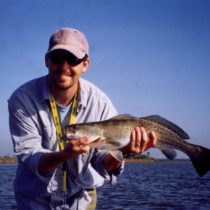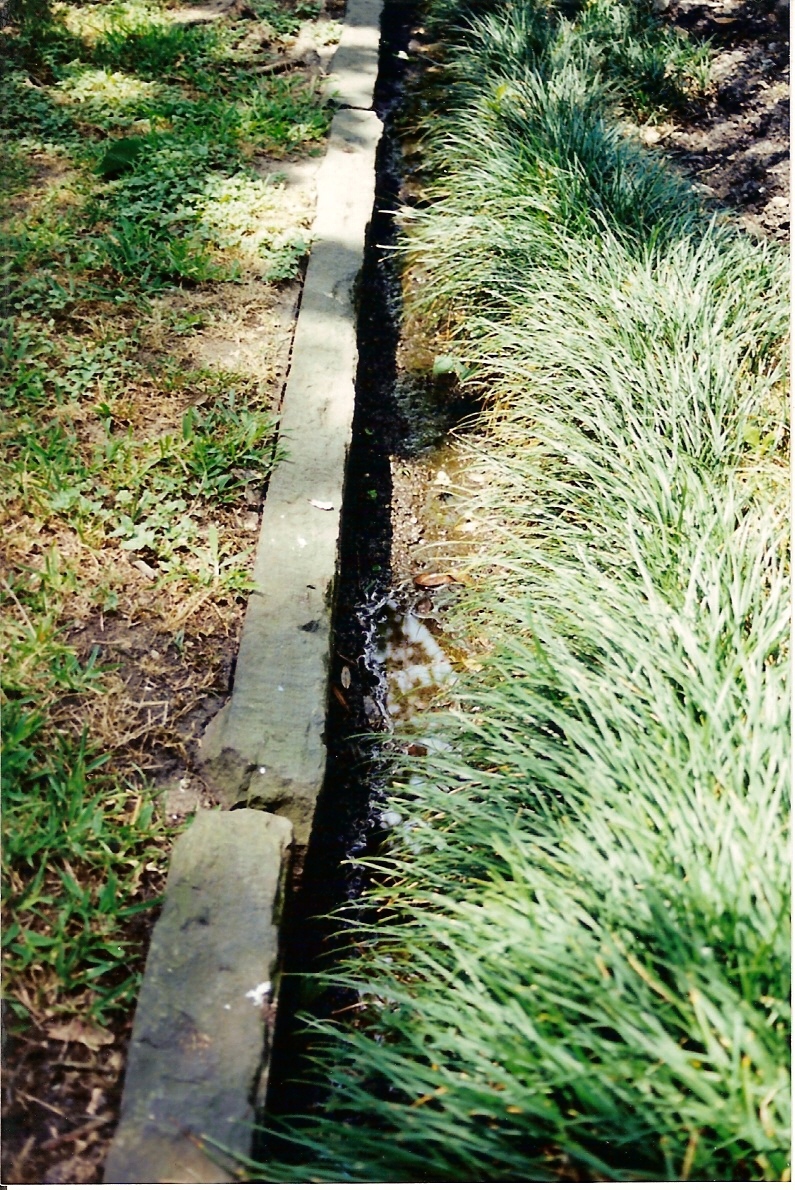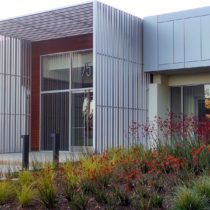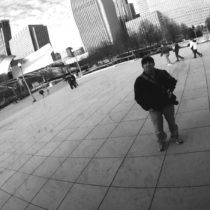Landscape Architecture for Landscape Architects › Forums › SUSTAINABILITY & DESIGN › Green Streets
- This topic has 1 reply, 9 voices, and was last updated 15 years, 5 months ago by
 Amit Pandya.
Amit Pandya.
-
AuthorPosts
-
February 17, 2010 at 5:15 pm #170917
 David M. HoppesParticipant
David M. HoppesParticipantDoes anyone know of cities in the southeastern U.S. that have utilized “Green Streets” as an alternative to conventional stormwater design? Any help would be appreciated.
February 17, 2010 at 6:19 pm #170931 Amit PandyaParticipant
Amit PandyaParticipantRight off the top of my head I would think Savannah, GA. I’ll try to dig a little deeper and find some more stuff out for you… Hope all is well.
February 18, 2010 at 5:43 am #170930 BoilerplaterParticipant
BoilerplaterParticipantWalking around New Orleans some years ago, it looked to me like the city had created green streets by default. Lack of maintenance or rebuilding funds had allowed many curbed street edges to deteriorate to the point where there were wide vegetated strips along them. I was told they have no property taxes there, one reason the city is so broke. That might be the point of a possible study – check the water quality flowing from streets with vegetated curbs against that on a new street with conventional drainage.
February 18, 2010 at 6:00 am #170929 BoilerplaterParticipant
BoilerplaterParticipantThis is what I’m talking about. To the right is the pavement, to the left is the tree lawn.
 March 1, 2010 at 5:26 pm #170928
March 1, 2010 at 5:26 pm #170928 Philip (PJ) BenenatiParticipant
Philip (PJ) BenenatiParticipantLibrety Hills in Charleston, SC used permeable pavers in the alleys of the development. Oak Terrace Preserve in Charleston also uses permeable pavers in the alleys and also used curb-side bioretention swales that flow to pocket parks that treat stormwater. The Johnson Medical Center in Clayton, NC uses a large bioretention cell in its parking lot (not really green “streets” but a nice example).
March 1, 2010 at 8:20 pm #170927 Wes Arola, RLAParticipant
Wes Arola, RLAParticipantTake a look into Portland, Oregon. I ran into a small town in Washington – Washougal which had just rennovated it small downtown main street for farmers markets and plaza space. All parallel parking areas were pervious pavers with slots in the curbs for water to drain into planted swale areas. Very functional example. I can send you some pictures if need be. Here is one I pulled off the web…
Notice the “curbless” detail which makes for sheet drainage into the planted areas and a much more pedestrian oriented atmosphere.March 2, 2010 at 2:30 pm #170926 Chris WhitisParticipant
Chris WhitisParticipantThanks for mentioning Johnston Medical Center. Here’s a link to some images of that project.
Johnston Medical CenterThat was a unique project in that we had a client allow us to have the GC price green infrastructure vs conventional in the schematic stages. Green ended up being slightly cheaper, but also had benefits that don’t typically equate to monetary values and thus green won out.
We’ve also completed a green street in Nashville, Deaderick Street, that incorporates bioretention at intersection pop-outs and pervious concrete in the sidewalk.
Atlanta also has some LID examples, though not specifically green streets that I’m aware of. Georgia Tech’s campus has some bioswale/ retention features and there’s also a small college in the ATL area, but the name escapes me at the moment.
As Wes mentioned below, Portland is definitely the leader. Here are some shots specifically of green streets we have on http://www.sitephocus.com, predominately from Portland – Green Streets
March 2, 2010 at 4:49 pm #170925 Claudia ChalfaParticipant
Claudia ChalfaParticipantThese are some great examples for me to use – I am currently designing a “green” parking area for a city that will include a small bioswale and possibly permeable paving.
Engineers here are very suspicious of the permeable paving because we have such fine, silty sands and they are afraid of the pavers becoming clogged over time – anyone have experience with these types of soils and this issue?
I know that some of our retention ponds become clogged over time – they percolate at first, so the engineer signs off on the plan, but after a few years many of them become completely clogged. I am trying to encourage one local person to remediate this situation by turning it into a rain garden.
This is in Sumter, SC by the way.
March 4, 2010 at 5:40 am #170924 Philip (PJ) BenenatiParticipant
Philip (PJ) BenenatiParticipantClaudia. I’m not familiar your soil conditions in SC but I’ve heard that as part of the regular maintenance for these systems, periodic cleaning of the pore openings is required. I’ve heard that this can be done with a street cleaner or pressure washer and that this should be done to remove the buildup of fines 1-2 times a year. The Florida Aquarium in Tampa has done research on permeable pavement options in the SE. this link, http://www.lid-stormwater.net/permpavers_benefits.htm, has some helpful resources including the final report from the Aquarium study.
Wes. Thanks for the pic of that town in WA. i wasn’t able to find any other clear images on the web. Can you post the best of what you have? Thanks for the example.
March 4, 2010 at 1:14 pm #170923 David M. HoppesParticipant
David M. HoppesParticipantThanks Chris, this is exactly what I’m looking for, well done.
March 4, 2010 at 1:17 pm #170922 David M. HoppesParticipant
David M. HoppesParticipantthanks for the post, this will get me started in the right direction.
March 4, 2010 at 7:14 pm #170921 Chris WhitisParticipant
Chris WhitisParticipantYou’re correct, Philip. Everything we’ve heard is that pervious needs to be swept and/ or vacuumed once or twice a year. There shouldn’t be any issues with sedimentation filling the entire cross section as fines are typically caught in the gravel pores between pavers and don’t migrate downwards.
Morton Arboretum in Chicago dissected a section of their parking lot that’s been in for around 15 years and that is exactly what they found with their system. I’ve been trying to find documentation on that via the web, but haven’t located any. We heard about it through our local Belgard rep and he came through afterwards with some photos and video of the study.
July 12, 2010 at 8:34 pm #170920 Philip (PJ) BenenatiParticipant
Philip (PJ) BenenatiParticipantI just wanted to share a few projects from Seattle:
1. Taylor 28 Apartment Building (Mithun) – Urban plaza/streetscape with several bioretention planters and porous concrete along the curb
2. 2201 Westlake Plaza (Berger Partnership) – Urban Plaza incorporating art-planters and bioretention
3. Piper Village (Berger Partnership) – Streetscape with curbside bioretention cells. Permeable Pavers and constructed wetland are also present on the site.July 13, 2010 at 12:38 am #170919 Cliff SeeParticipant
Cliff SeeParticipantI have just seen a major street near where i live (in Berkeley / El Cerrito in California) has been revamped… There are water basins up and down both sides with plantings – they are taking the place of the standard planted trees and tree grates. there are twice as many as were before. Not sure who you could contact, maybe the city hall. The street is San Pablo Avenue.
I can describe the basins: they are about 5x 8 feet, cut right in the middle of a widened sidewalk. There are small “curbs” around the edge of the basin cuts, with breaks for water to drain into. The basins are rather deep on one half, while the soil is built up on the other end so one can plant a tree (otherwise it would look awkward with a tree in a deep “hole”. Still, it looks funny to me… and there are a lot of them. I don’t see what would be wrong with draining surface street water to a large reservoir/basin or even to a scaled down water treatment plant.July 13, 2010 at 12:51 am #170918 Michael BarcelosParticipant
Michael BarcelosParticipantAiken, SC is currently in the construction phase of a green street project funded by the American Recovery and Reinvestment Act. They have installed several bioswales into a few existing wooded parkways that run along each street in the historic downtown. I was involved in a studio project in Aiken last year so have a background knowledge of the “green infrastructure” project currently being installed.
Here is link to a desription of the project:
http://www.clemson.edu/media-relations/article.php?article_id=2205
-
AuthorPosts
- You must be logged in to reply to this topic.


